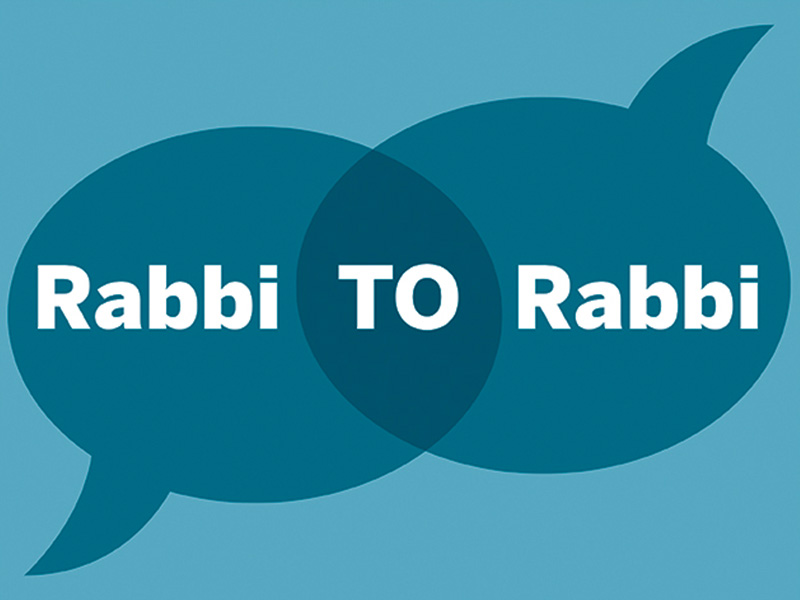Was the re-establishment of a Jewish state spiritually audacious, or was it a profoundly religious act by secular visionaries who saw an opportunity and took it?
Rabbi Avi Finegold
Founder, The Jewish Learning Lab, Montreal
Rabbi Philip Scheim
Beth David B’nai Israel Beth Am Congregation, Toronto
Rabbi Finegold: There is an interesting chassidic custom of celebrating the final meal of Pesach as a Seudat Mashiach, a meal dedicated to contemplating and actively working to bring the Messiah. Despite my rationalist, non-chassidic tendencies, I always try and organize one with some friends if I cannot attend a larger gathering. I find that, in the waning hours of a holiday that is rooted in history, focusing on the future helps to actualize all I have been thinking about over the past eight days.
In traditional thought, there are many different opinions as to who the Messiah is and what the messianic era will usher in. These predictions tend to be very specific and speak of someone arriving on a white donkey to bring about world peace and global acknowledgement of the Jewish God. By contrast, Maimonides, the paragon of rationalist thought, speaks of a more generalized era of peace and coexistence. This approach tends to resonate with me.
How do you approach the idea of the Messiah? And do you think that we are in the process of fulfilling the promise of “Leshanah haba’a b’Yerushalayim” (“next year in Jerusalem”) by promoting the Zionist idea, or is that phrase really just about the final redemption?
Rabbi Scheim: The legendary Israeli comedy trio HaGashash HaHiver imagined an encounter between the newly arrived Mashiach and the chief rabbis of Israel. The rabbis, terrified at the negative impact on their fundraising and political achievements, beg the Messiah to leave, suggesting that he return in 100 years, attempting to convince him that “the end of days” has not yet arrived.
The Gashashim touched upon your profound question. Do we really want, in a literal sense, a rebuilt Temple in Jerusalem, with animal sacrifice and the like, or do we view the structure of Jewish prayer, modelled on the ancient sacrificial timetable, as a step forward in our people’s spiritual development?
As for “next year in Jerusalem,” it may have end-of-days implications, but I believe that these words serve a dual purpose: they affirm our connection with the continuum of Jewish yearning for a better tomorrow, while also recognizing the spiritual audacity of our pre-empting the Mashiach’s arrival in our re-establishment of a Jewish state.
Rabbi Finegold: I do not think it is audacious or pre-emptive. I think that a better tomorrow begins with a better today.
The Seudat Mashiach occurs at the very end of the holiday, in the liminal space between Pesach and a regular day. Most people choose to just wait out the holiday for another hour and then go out and buy a dozen cheese bagels. But the chassid sees the liminal space as one final opportunity to do a mitzvah and change their internal state, to become closer to God. This kind of practice does not just usher in the redemption, it is the redemption itself.
If Passover is just a time to remember and wait for the future, then the potential has been squandered. That is why the establishment of a Jewish state is not audacious. It was the work of those visionaries who saw the opportunity for what it was and established the future in our time. Nevertheless, I still follow your lead and say “Next year in Jerusalem,” to remind all those listening that there is still work to do.
Rabbi Scheim: I suspect that there are few in the chassidic or haredi world who would accept your (or my) theological understanding of the establishment of the State of Israel. Yet, it is remarkable that those who made aliyah to pre-state Israel, who were largely secular, would become the inheritors and transmitters of a deeply religious vision of a return to Zion.
Avraham Shlonsky, the renowned Hebrew poet who travelled far from his chassidic roots after he made aliyah, worked in construction and road-paving. In his poem Amal (Toil), Shlonsky described Israel as a tallit, its newly constructed houses as the batim, the boxes of tfillin, and the roads that he paved as retzuot, the tfillin straps.
The Zionist transformation, even when enacted by secular Jews, was a profoundly religious act. Like the Seudat Mashiach that you describe, it joined “next year” and this year into an unbreakable bond.
